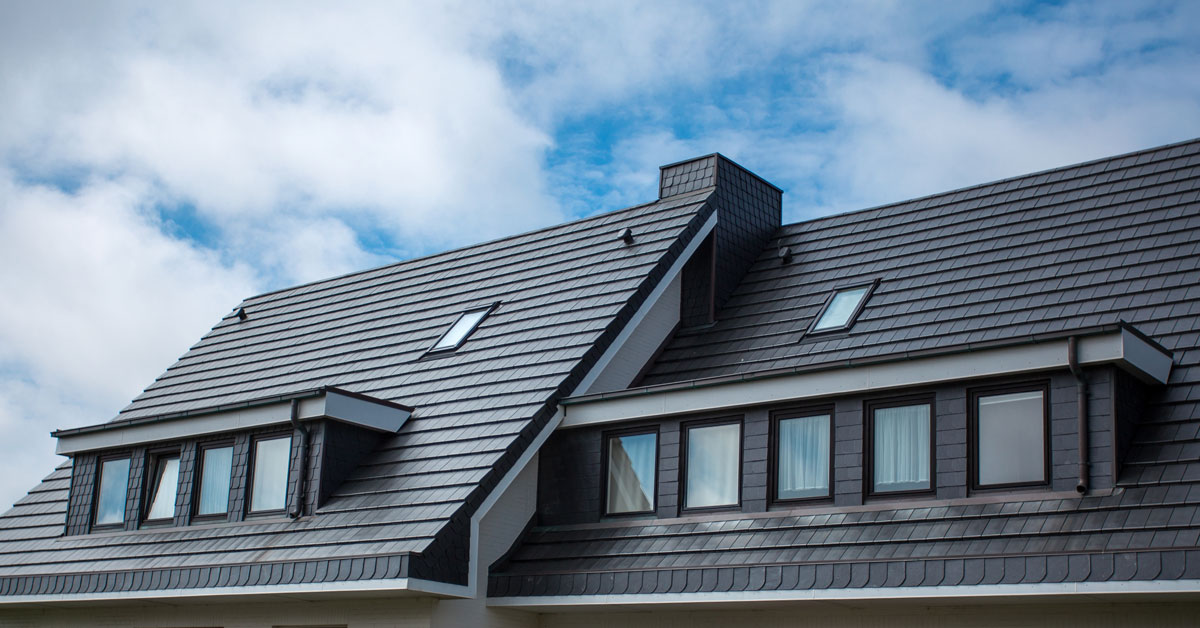The Benefits of Collaborating With Gainesville FL Roofing Companies
The Benefits of Collaborating With Gainesville FL Roofing Companies
Blog Article
Ideal Practices for Ensuring Appropriate Roof Air Flow
A well balanced intake and exhaust air vent proportion, frequently 1:300, plays a crucial duty, with intake vents ideally placed at the reduced side of the roofing for cool air entrance and exhaust vents at the peak for warm air leave. Maintaining insulation away from vents is important to prevent air flow constraint.
Understand Ventilation Basics
Correctly recognizing air flow fundamentals is necessary for ensuring the durability and effectiveness of roofing systems. Effective ventilation alleviates dampness buildup and temperature level extremes in the attic, both of which can result in substantial structural damages in time. A well-ventilated roofing system assists in avoiding typical concerns such as mold and mildew development, timber rot, and ice dams, which can compromise the integrity of the roof covering products and the underlying frameworks.
The key objective of ventilation is to help with the movement of air, allowing for a consistent exchange between the interior and exterior atmospheres. This balance is achieved through a mix of consumption and exhaust vents that collaborate to keep optimum air movement. Intake vents, generally situated along the soffits or eaves, enable fresh air to get in the attic room, while exhaust vents, often located at or near the roof covering ridge, make it possible for hot, damp air to get away.
Key factors influencing the performance of roofing air flow consist of appropriate positioning, sufficient sizing, and guaranteeing that both intake and exhaust vents are unblocked. Normal assessment and maintenance are crucial to determine potential obstructions, damage, or inefficiencies in the air flow system, thus protecting the roof's efficiency and sturdiness.
Types of Roof Covering Vents
Roofing system vents play a crucial duty in preserving reliable attic air flow and, by expansion, the overall wellness of the roof system. Numerous types of roof vents are available, each with distinct benefits tailored to specific roofing needs. Ridge vents, as an example, are mounted along the roof's height, allowing cozy, humid air to leave from the attic room. They offer constant air flow and blend effortlessly with the roofline, making them both reliable and aesthetically pleasing.

Soffit vents are mounted under the eaves and job in tandem with roofing vents to guarantee a well balanced consumption and exhaust system. By allowing cooler air to get in from below, soffit vents help with the expulsion of hot air via upper vents. Gable vents, located on the exterior walls of the attic room, offer one more effective option, specifically in homes with saddleback roofs.
Analyze Your Current Ventilation

Next, take into consideration the age and problem of your roof covering materials and ventilation elements. Older systems may not abide by present building regulations or might have weakened gradually, minimizing their efficiency. Conduct a complete exam to determine any indicators of damage, such as corrosion, damage, or spaces that might jeopardize the system's performance.
In addition, determine the attic temperature and moisture degrees. Heats and humidity can suggest inadequate ventilation - roofing companies gainesville florida. Utilize a hygrometer and thermostat to acquire precise analyses, comparing them with outside problems. Relentless discrepancies suggest prospective problems that need dealing with.
Installation Best Practices
Efficient setup of roof covering ventilation systems is vital for guaranteeing ideal efficiency and longevity. Correct installment starts with pop over to these guys recognizing the details air flow needs of the structure and the roof it covers. This involves calculating the appropriate ratio of intake to tire vents, generally adhering to the 1:300 guideline, which specifies one square foot of ventilation for each 300 square feet of attic room floor area.

Consumption vents should be installed at the roofing's reduced edge, commonly in the soffits, to allow cool air to enter. Exhaust vents, on the other hand, need to be set up near or at the roof's height to promote the leave of cozy, wet air.
Seal all vent connections carefully to avoid air leaks and potential water seepage. Use top notch products and follow supplier standards to ensure durability and performance. Furthermore, incorporating ridge vents with baffles can substantially boost air movement efficiency by preventing wind-driven rainfall and snow from getting in the attic room.
Ultimately, specific installment of roofing ventilation systems minimizes potential issues such as mold growth, ice dams, and structural damages, making sure the roofing's honesty and the structure's general wellness.
Normal Upkeep Tips
Consistency in maintenance techniques is essential to guaranteeing the lasting effectiveness of roof air flow systems. Routine assessments are vital, ideally executed biannually-- in the spring and fall. Throughout these assessments, make sure that vents are totally free of particles, nests, and other obstructions that could hinder airflow. Check for any kind of signs of wetness build-up or mold, as these can show improper air flow or leaks (roofing companies in gainesville florida).
Cleaning up the vents is an additional vital task. Make use of a soft brush or a vacuum cleaner to remove dirt and debris from consumption and exhaust vents. Be mindful not to damage the vent displays or louvers during the process. In addition, examine the attic room space for any kind of indications of water damages, which might endanger the honesty of the roof.
Appropriate insulation is equally crucial. Guarantee that attic room insulation does not block the vents, as this can drastically restrict air movement. If any kind of insulation has shifted or cleared up, rearrange or replace it to keep an effective barrier.
Last but not least, replace any type of harmed or missing components immediately. Broken vents, broken roof shingles, or scrubby blinking can all add to inadequate air flow and ought to be attended to without hold-up. Regular maintenance ensures that the roofing ventilation system works optimally, consequently prolonging the life expectancy of the roofing system itself.
Conclusion
Making sure correct roof air flow is critical for maintaining the effectiveness and longevity of a roof system. Adherence to the 1:300 intake and exhaust air vent proportion, paired with the strategic positioning of vents, is crucial.
A well balanced intake and exhaust air vent proportion, commonly 1:300, plays a pivotal duty, with consumption go to this website vents ideally put at the reduced side of the roofing for amazing air access and exhaust vents at the optimal for cozy air exit. Consumption vents, generally located along the soffits or eaves, allow fresh air to go into the attic room check this site out room, while exhaust vents, frequently situated at or near the roofing system ridge, enable warm, humid air to get away.
Soffit vents are set up under the eaves and job in tandem with roof vents to guarantee a balanced intake and exhaust system. By allowing cooler air to go into from below, soffit vents assist in the expulsion of warm air through top vents. Adherence to the 1:300 consumption and exhaust air vent ratio, combined with the calculated placement of vents, is vital.
Report this page